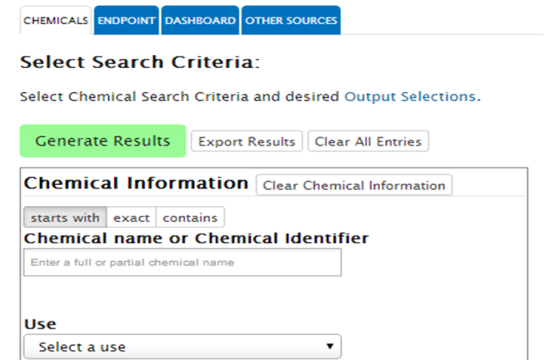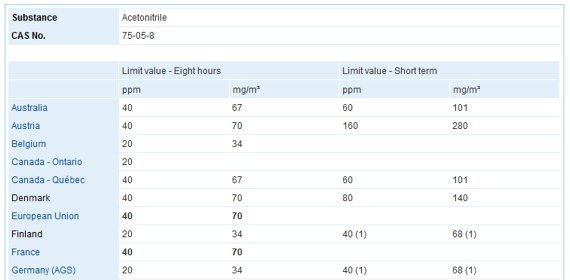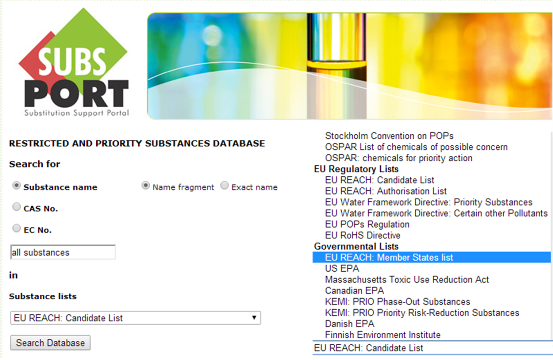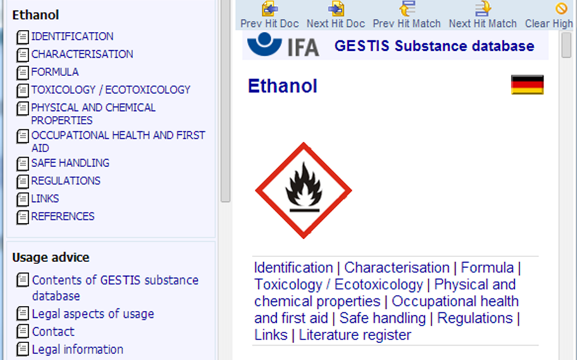Do You Know These 5 Free Underutilized Chemical Regulatory Tools?
Little Pro on 2016-01-08
As a chemical safety and regulatory affairs professional who is responsible for regulatory compliance check, chemical registration or hazard communication, you will need to have access to regulated chemical lists in one country/region and obtain necessary chemical safety data (toxicology data, occupational exposure limits, etc.) to do your job.
The good news is that there are many free chemical regulatory databases and tools available. Here are 5 free tools that we think are among the most underused but very helpful tools for checking chemical regulatory lists and chemical safety data.
5. EPA's ChemView
Finding the hazard data of a chemical substance is a lot easier nowadays with the help from OECD eChemPortal and ECHA's registered substances database. That does not mean those tools work the best for every substance in every country.
If you wish to find health and safety data for specific existing chemical substances received by EPA in the USA and EPA's assessments and regulatory actions under the Toxic Substances Control Act (TSCA), the best free tool available is EPA's ChemView.

As a young database developed by EPA recently, ChemView currently only contains information on over 1,500 chemicals. EPA will continue adding more info that EPA receives about chemicals including those on EPA's Safer Chemical Ingredient List.
It shall be noted that many regulated existing chemicals subject to Significant New Use Rules (SNUR) under TSCA are assigned with generic names only (no CAS has been given), you shall search those generic substances by function groups (i.e, amine) in ChemView.
2. GESTIS International Limit Values for Chemical Agents
When it comes to a free tool for finding international occupational exposure limits, there is no better one than GETIS International Limit Values for Chemical Agents.
This free database developed by IFA contains a collection of occupational limit values for hazardous substances gathered from various EU member states, Australia, Canada, Japan, New Zealand, Singapore, South Korea, Switzerland, China, and the United States. Limit values of almost 1,800 substances are listed and kept up-to-date.
For example, if you search Acetonitrile or CAS No. 75-05-8 in GESTIS, all OELs in different countries will pop up.

3. SUBSPORT Restricted and Priority Substances Database
If you are looking for various lists of substances of concern in one place, you may try SUBSPORT Restricted and Priority Substances Database. This free database contains 32 lists of substances that are legally or voluntarily restricted or are recommended for restriction due to their hazards.

Lists are grouped in five categories: international agreements, EU regulatory lists, governmental lists, NGO and trade union lists as well as company lists. Those lists include and are not limited to:
- EU SVHC Candidate List;
- EU RoHS;
- ChemSec SIN List;
- Stockholm Convention on POPs;
- OEKO-TEX STANDARD 100 (238 substances);
2. Chemical Risk Information Platform (CHRIP)
Chemical Risk Information Platform (CHRIP) is a free database developed by the National Institute of Technology and Evaluation (NITE) in Japan to help companies find comprehensive information on Risk Assessments and Laws & Regulations etc. of chemical substances.
Most of people probably mainly use CHRIP for checking Japanese inventory of existing and new chemical substances (Japan ENCS) and other controlled chemicals under the Chemical Substance Control Law (CSCL) and Industrial Safety and Health Law (ISHL).
In fact, you could do more than that with CHRIP. CHRIP also provides the following lists in English (to name a few) free of charge. Those lists are frequently updated to keep up-to-date.
- Substances Subject to TSCA Significant New Use Rules (SNUR);
- Thailand's Hazardous Substances List That the Department of Industrial Works (DIW) Is Responsible For;
- Lists of Regulated Chemicals under Vietnam's Chemical Law;
- Advisory GHS Classifications by Japanese Government.

1. GESTIS Hazardous Substance Database
If you search for harmonized EU GHS classifications for your substances, you will go to ECHA's C&L inventory. If you search for German water hazard class or German occupational exposure limits for your substances, you may need to go to other places.
With GESTIS hazard substance database, you can easily do both in one place. I would recommend this tool to every company who supplies chemicals to German market because it offers lots of Germany-specific regulatory info which usually needs to be included in the section 15 of SDSs. The Germany-specific regulatory info includes:
- WORKPLACE LABELLING ACCORDING TO GERMAN ASR A1;
- GERMAN OCCUPATIONAL EXPOSURE LIMIT VALUES;
- GERMAN WATER HAZARD CLASS;

GESTIS hazard substance database is developed by the Institute for Occupational Safety and Health of the German Social Accident Insurance (IFA) and contains up-to-date GHS classification & labelling info, physio-chemical properties, personal protection equipment info, occupational exposure limits and other regulatory info for more than 8,500 substances. Data are updated immediately after publication of new official regulations or after the issue of new scientific results.
What makes GETIS more exciting is that its mobile version is also available. You can view chemical hazard data on your phone by clicking here.
Now go and try them!! Share this page if you like it.
Having Questions?
We do not provide consultancy services. If you have questions or need any help, please contact our sponsor. You may also find an expert in CSP business directory below. If you are a consultant, you may get yourself listed in CSP business directory (free) or sponsor this page to leave your contact info on this page..
